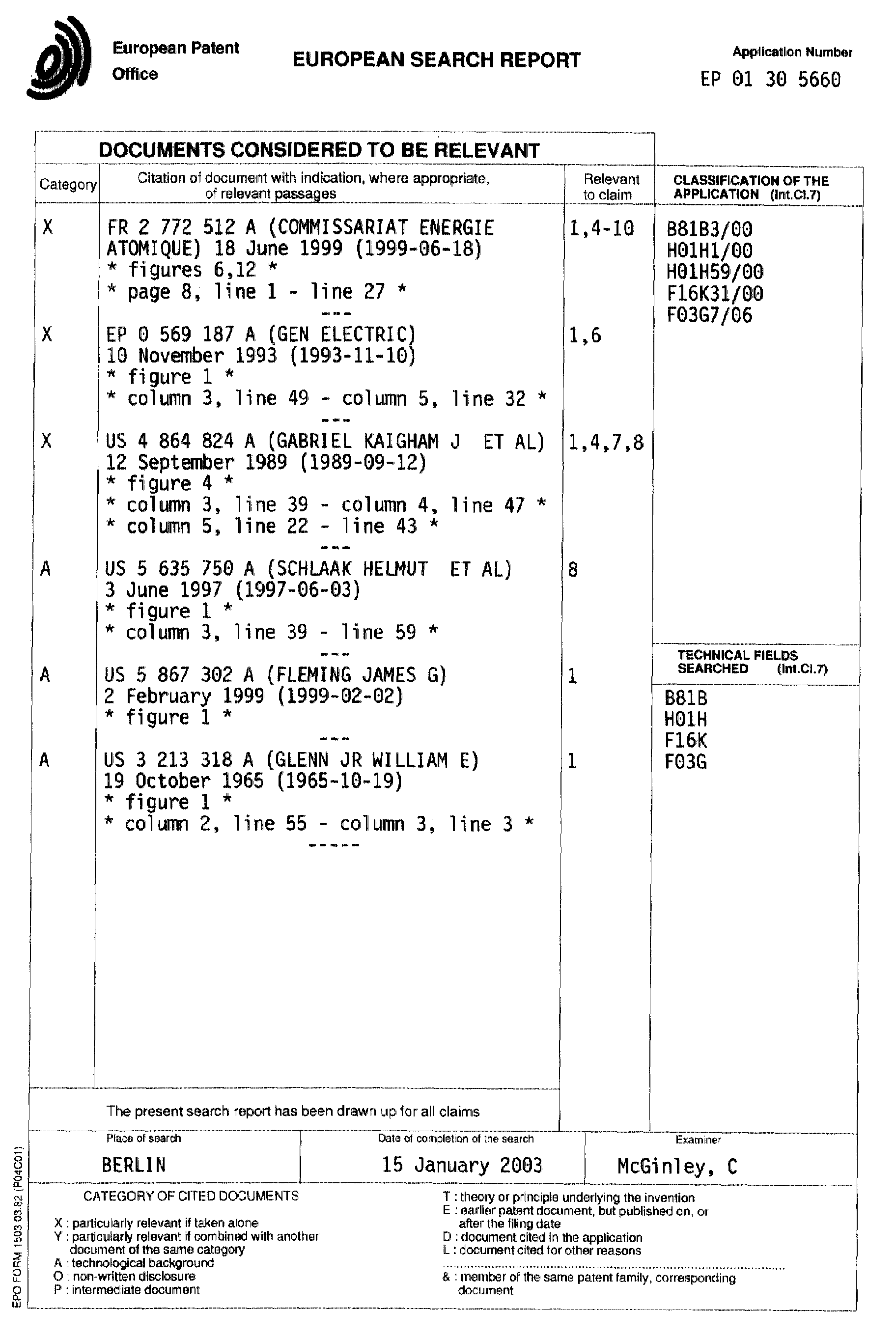| (19) |
 |
|
(11) |
EP 1 170 248 A3 |
| (12) |
EUROPEAN PATENT APPLICATION |
| (88) |
Date of publication A3: |
|
12.03.2003 Bulletin 2003/11 |
| (43) |
Date of publication A2: |
|
09.01.2002 Bulletin 2002/02 |
| (22) |
Date of filing: 29.06.2001 |
|
|
| (84) |
Designated Contracting States: |
|
AT BE CH CY DE DK ES FI FR GB GR IE IT LI LU MC NL PT SE TR |
|
Designated Extension States: |
|
AL LT LV MK RO SI |
| (30) |
Priority: |
05.07.2000 US 610047
|
| (71) |
Applicant: JDS Uniphase Corporation |
|
San Jose, CA 95134 (US) |
|
| (72) |
Inventors: |
|
- Hill, Edward Arthur
Chapel Hill, North Carolina 27514 (US)
- Dhuler, Vijaykumar Rudrappa
Raleigh, North Carolina 27613 (US)
- Cowen, Allen Bruce
Morrisville, North Carolina 27560 (US)
- Mahadevan, Ramaswamy
Chapel Hill, North Carolina 27514 (US)
- Wood, Robert L
Cary, North Carolina 27502 (US)
|
| (74) |
Representative: McKechnie, Neil et al |
|
Kennedys Patent Agency Limited, Floor 5, Queens House, 29 St. Vincent Place
Glasgow G1 2DT
Glasgow G1 2DT (GB) |
|
| |
|
| (54) |
Microelectromechanical actuators including sinuous beam structures |
(57) In embodiments of the present invention, a microelectromechanical actuator includes
a beam having respective first and second ends attached to a substrate and a body
disposed between the first and second ends having a sinuous shape. The body includes
a portion operative to engage a object of actuation and apply a force thereto in a
direction perpendicular to the beam responsive to at least one of a compressive force
and a tensile force on the beam. The sinuous shape may be sinusoidal, e.g., a shape
approximating a single period of a cosine curve or a single period of a sine curve.
The beam may be thermally actuated or driven by another actuator. In other embodiments,
a rotary actuator includes first and second beams, a respective one of which has first
and second ends attached to a substrate and a body disposed between the first and
second ends. Each body includes first and second oppositely inflected portions. The
bodies of the first and second beams intersect one another at points at which the
first and second oppositely inflected portions of the first and second bodies meet.
The bodies of the first and second beams are operative to engage the object of actuation
and rotate the object of actuation around the point of intersection responsive to
at least one of compressive force and tensile force on the first and second beams.
Related methods are also described.


